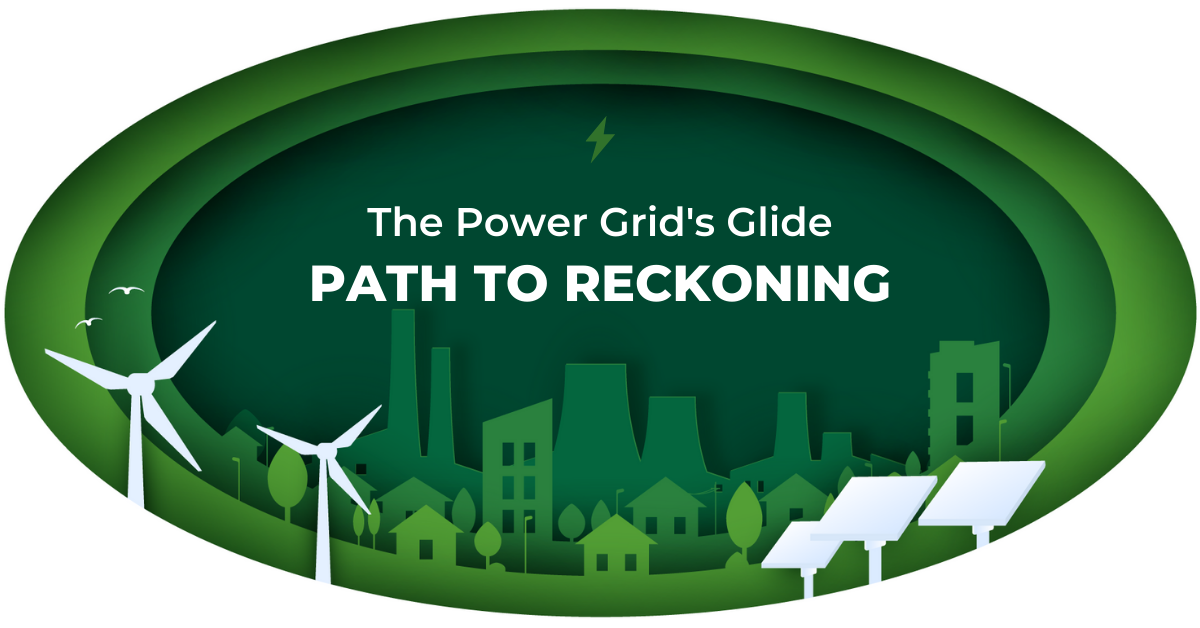
“The U.S. electrical system is becoming less dependable. The problem is likely to get worse before it gets better.” – The Wall Street Journal, February 18, 2022.
I can take down another one of my seven predictions for 2022. Some numbers from the WSJ: in 2000, there were fewer than two dozen major disruptions. In 2020 there were more than 180. Customers experienced over eight hours of disruption (on average) in 2020, more than double the number in 2013 when the government began tracking this metric.
The Journal reports several reasons for the rickety grid.
The Markets’ Disincentives for Reliability
First, utilities are no longer dominant producers of electricity. Most of the country has some sort of competition, even here in the upper Midwest where we have vertical utilities, but wholesale power generation is competitive. In a competitive market, bulk power generators don’t care enough about reliability. Reliability depends on only, oh, state laws, including renewable mandates, FERC, regional transmission organizations, and, of course, distribution utilities. Before, only the utility had responsibility from the coal pile to our meters. Now it’s smeared like peanut butter across many disparate stakeholders, all of whom want something different. If everyone is accountable, no one is accountable.
Climate Change
Another reason noted is climate change. If we’re not smart, we will get into this vicious circle: 1) increased outages are caused by climate change, 2) we need more renewable generation and less from dispatchable and reliable thermal generation – to stop climate change, 3) which leads to more outages, 4) it’s climate change 5) we need shut down more thermal generation, 6) it’s climate change. Etcetera. There will always be fires, floods, droughts, hurricanes, and tornadoes. We must dispassionately and objectively evaluate the increased frequency of outages.
Our Grandparents’ Distribution and Transmission
Another factor is the age of our transmission and distribution systems, which have an expected useful life of about 50 years. The Journal reports that 70% of transmission and distribution systems are in the second half of their lifetimes. When I look at the distribution systems in my neighborhood, I think of the “What’s Wrong Here?” challenges in Electrical Construction and Maintenance Magazine. I’ll bet our hyper-local distribution system predates World War II simply because the neighborhood was developed just before WWII. Homes are fed by directly connecting to the distribution conductors running through the alleys (this is legal?) with huge untrimmed trees everywhere.
 Electrification
Electrification
Ralph Izzo, PSEG’s chief executive, is approaching electrification with eyes and minds wide open. Consistent with the theme a couple of weeks ago, an unintended consequence will be concentration – the opposite of diversification of energy supply – which will bring wild rides in shortages, prices, and outages, all else equal. The electric grid will never have the storage capacity of petrol tank farms, tankers, gas stations, gasoline, diesel tanks, and natural gas caverns – a storage canyon called the chasm.
Nuclear Power is Required
The New York independent system operator that manages supply and demand in New York sees the shortages coming as coal plants are gone, natural gas plants are closing, and one nuclear plant just closed because it was a “safety hazard.” Dude, we have roughly 4,800 reactor years of operation in the commercial fleet and 7,500 reactor years of safe and clean operation in the naval fleet (both are based on conservative estimates of reactor life). If that isn’t safe, reliable, and contained, I don’t know what is.
For example, see the image below. Do you know what that is? Probably not, so I will fill you in. The parallel tracks are where the cooling towers for the Duane Arnold nuclear plant used to be, just north of Cedar Rapids, Iowa. The derecho that plowed half of Iowa flat in 2020 took out the cooling towers. You can see the debris field in the soybeans, grass, and creek. The primary cooling source was wiped out while in operation, but I didn’t know this because nothing else happened. In other words, the cooling source for the reactor plant was destroyed, and there was no incident. Was it operating? They planned to shut it down in the fall, but “it will not restart,” so the answer is yes. If you want to decarb without safe baseload nuclear, you are not serious about decarb and climate change.
 Anyway, the NYISO may require rolling blackouts in NY for the first time as soon as next year. Meanwhile, 13 GW of thermal power generation will be shut down in the Midcontinent Independent System Operator territory by 2024, but they have 8 GW “in development – not balanced or sustainable.”
Anyway, the NYISO may require rolling blackouts in NY for the first time as soon as next year. Meanwhile, 13 GW of thermal power generation will be shut down in the Midcontinent Independent System Operator territory by 2024, but they have 8 GW “in development – not balanced or sustainable.”
Reliability First
Curt Morgan, CEO of Vistra, which operates the nation’s largest fleet of power plants in competitive markets, says, “Everything is tied to having electricity, and yet we’re not focusing on the reliability of the grid. That’s absurd, and that’s frightening. There’s such an emotional drive to get where we want to get on climate change, which I understand, but we can’t throw out the idea of having a reliable grid.”
Hear, hear!
Jake Millette, a stellar deep thinker and down-to-earth pragmatist here at Michaels, and I developed and conduct training to balance cost, reliability, and clean power – the three-legged stool for managing carbon reduction strategies. It looks as follows on the current trajectory. Who wants to be on that stool?
 I’ll continue next week with what will happen and what should happen to help bridge the chasm.
I’ll continue next week with what will happen and what should happen to help bridge the chasm.
 Electrification
Electrification



